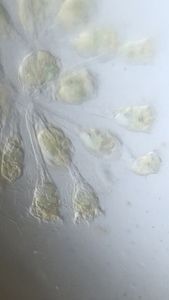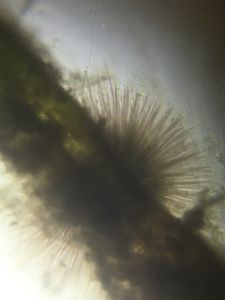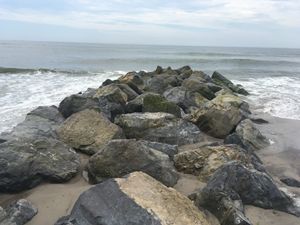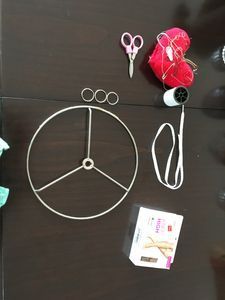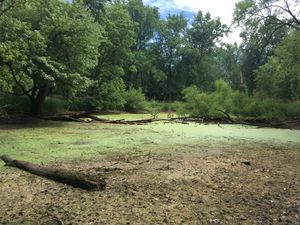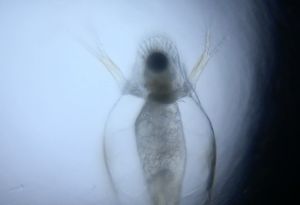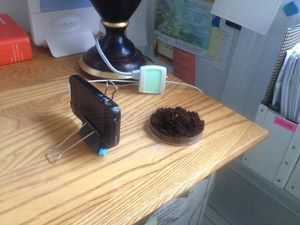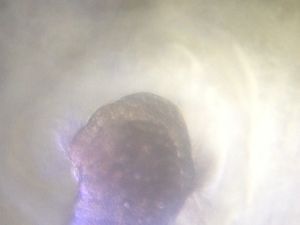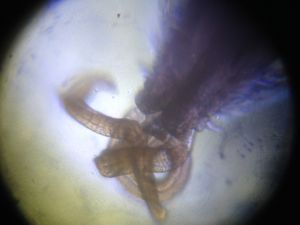Eggs and Veligers (Saltwater and Freshwater)
 Sep 18, 2015 • 7:57 PM UTC
Sep 18, 2015 • 7:57 PM UTC Unknown Location
Unknown Location 140x Magnification
140x Magnification Microorganisms
Microorganisms
Matthew Rossi
I'm a novelist, essayist, and a writing consultant. I work in the writing centers at Columbia and Baruch University and explore research into the overlap of maker cultures and writing. My work with the Foldscope tends to focus on finding wild creatures in urban spaces and looking at how human works are shaped by the movements of the biosphere.
40posts
105comments
4locations
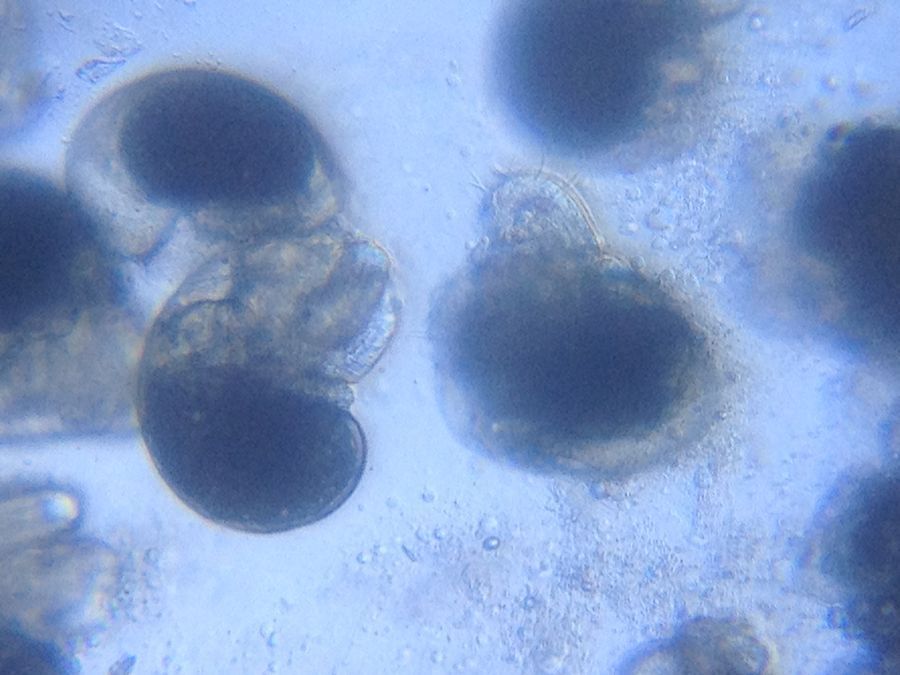
One of the first things I ever looked at and photographed under a microscope was this egg sac I found earlier this summer while looking for plankton in the back bay of my mother’s shore home in New Jersey.
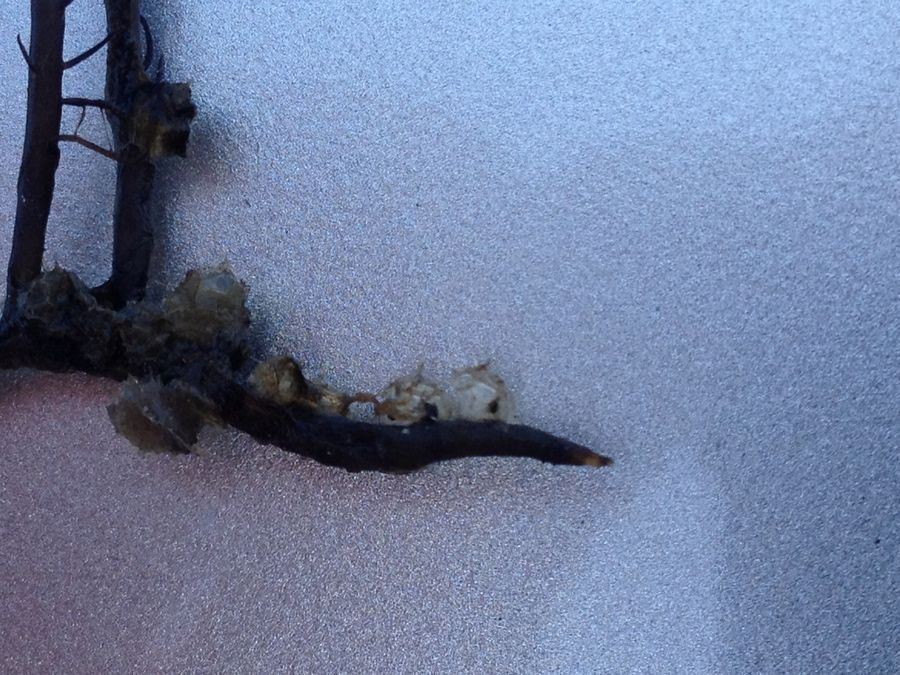
The egg sac posed an early challenge to me in terms of figuring out what certain creatures are. I’m not a marine biologist (or, indeed, a biologist at all), and even though I have a long-standing love of ocean life, there’s still a lot of things floating and swimming around in the water that is unfamiliar to me. So I often have to rely on my knowledge of what lives in any given environment to make an identification, and when that doesn’t work, I have to research a bit.
When I looked at this egg sac under the microscope, expecting to see some eggs, I was surprised by movement:
When I looked at this egg sac under the microscope, expecting to see some eggs, I was surprised by movement:
You can see the form of the egg sac, its rigid inverted soccerball (football, if you’re not American) shape. And of course, hundreds of somebodies floating around in it, making quite a commotion. With a little prodding, I ruptured the egg sac and they spilled out (unfortunately a few were hurt, I think, in the process).
At the time, I had no idea what they were. The standard Google search wasn’t much use, so I e-mailed a marine biologist with my video and photographs. He came back that these were veligers, which is to say, snail larvae. Though the species was unknown (he suspected a form of moon snail…I think perhaps a whelk, just from knowing who lives in those waters), it became suddenly clear what they were. The shape of the shells, the spinning motion they made in my slide left no doubt for me.
From previous posts, you might guess that I’m fascinated by the larvae of different creatures, how they both resemble and differ from their adult forms. The free swimming veliger are so different from what I think of when I think of snails, their cilia motoring relentlessly, their pseudopods extended for maximum balance in a kind of floral reach. But they are also a common form.
Later in the summer, in St. Simons, I found another egg sac, this one buried in the sand and gelatinous, rather than stiff. When it hatched, I had a container full of more free swimming creatures covered in cilia.
From previous posts, you might guess that I’m fascinated by the larvae of different creatures, how they both resemble and differ from their adult forms. The free swimming veliger are so different from what I think of when I think of snails, their cilia motoring relentlessly, their pseudopods extended for maximum balance in a kind of floral reach. But they are also a common form.
Later in the summer, in St. Simons, I found another egg sac, this one buried in the sand and gelatinous, rather than stiff. When it hatched, I had a container full of more free swimming creatures covered in cilia.
I am not sure what they are, but I suspect they aren’t snails. More likely, they’re clams of the same sort that one finds when one buries their hand in the sand directly after a wave washed in. And then again, while walking through the Brooklyn Botanical Garden, I overturned a leaf in a creek and found there another jellied egg sac, this one of a freshwater snail.


Alas, these did not hatch for me.
There’s something cool about the persistent cycle of egg-laying and hatching that goes on in our ecosphere. This is life’s mission, after all, to make more life. And here is our evidence of that.
Now if someone can tell me what kind of clams I caught, if they are clams at all, I would be forever in your debt.
There’s something cool about the persistent cycle of egg-laying and hatching that goes on in our ecosphere. This is life’s mission, after all, to make more life. And here is our evidence of that.
Now if someone can tell me what kind of clams I caught, if they are clams at all, I would be forever in your debt.
Sign in to commentNobody has commented yet... Share your thoughts with the author and start the discussion!
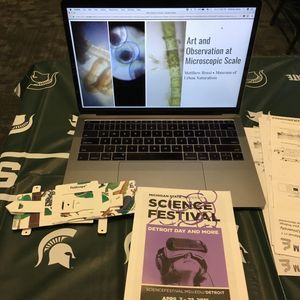
 0 Applause
0 Applause 0 Comments
0 Comments




